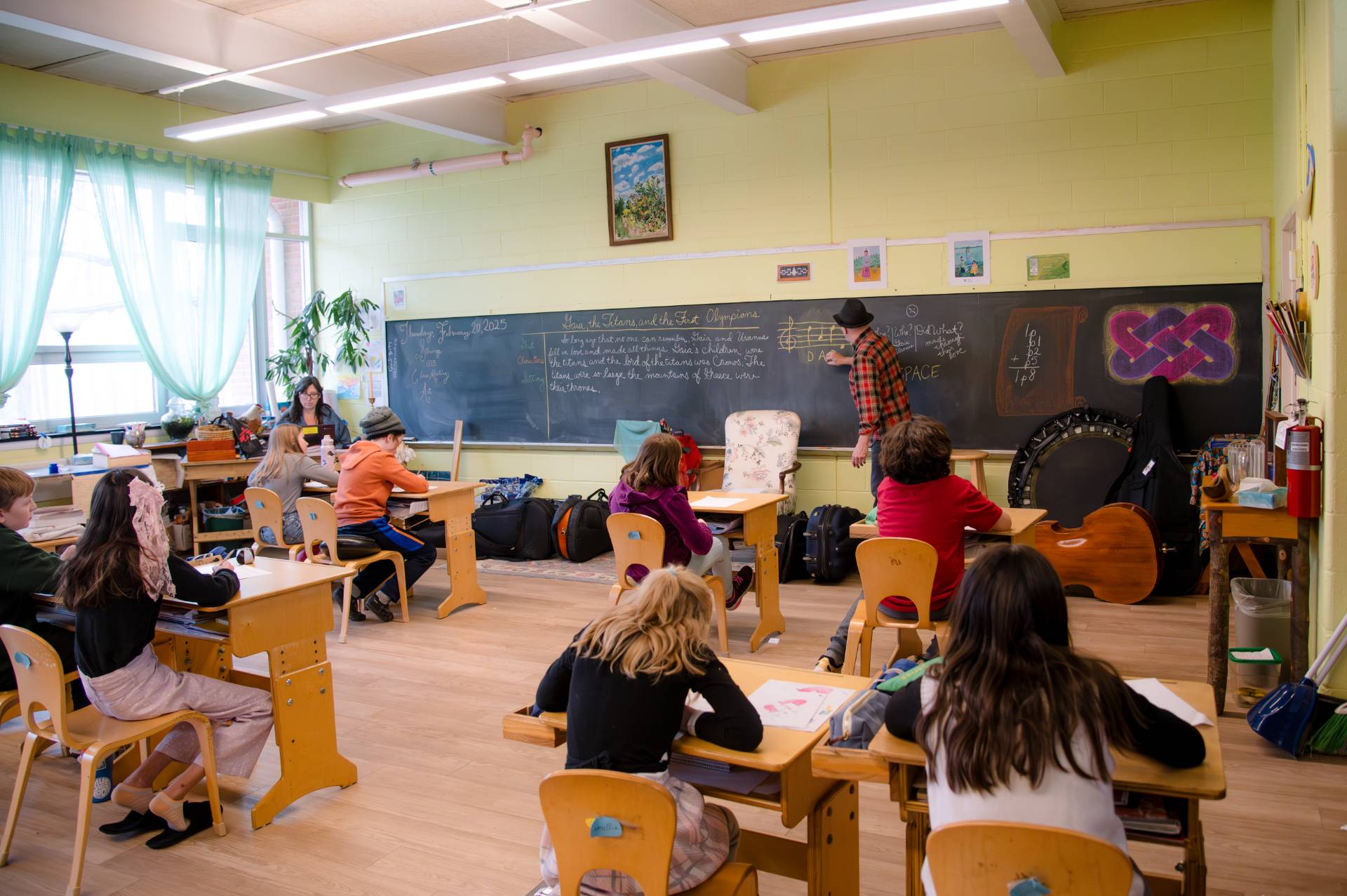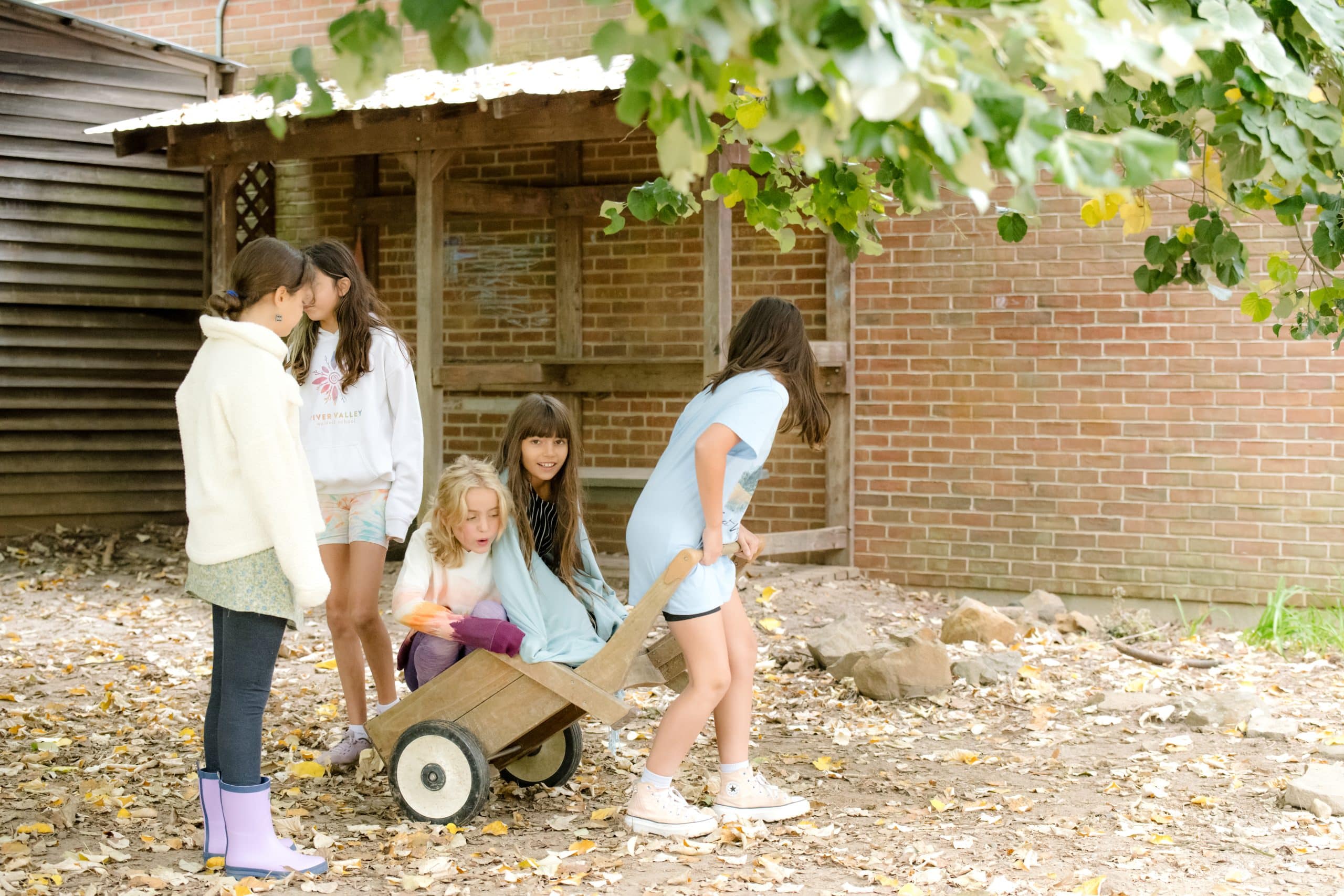
Why Waldorf Education
Discover what makes Waldorf education great.
What Is Waldorf Education?
Waldorf transforms every lesson into a lived experience.
Many traditional schools focus narrowly on academics and standardized outcomes, often at the expense of creativity, emotional well-being, and personal growth.
We believe that education should be an enriching, holistic experience—one that meets your child’s social, emotional, physical, and intellectual needs. Learning should meet your child’s needs and interests,encouraging them to flourish with confidence and purpose.
At River Valley Waldorf School, our dedicated teachers work with Waldorf teaching methods, which have benefited children across the globe for over a century. We prioritize meaningful relationships, independent thinking, and hands-on learning. Your child’s growth, intellectually, socially, and emotionally, is at the heart of everything we do.
Class teachers weave an approach to academics that includes art, movement, and hands-on experiences prioritizing strong classroom communities and relationships. Screen-free, connection-rich classrooms invite head, heart, and hands to learn together nurturing confident, creative problem-solvers who meet the world with curiosity, compassion, and courage.

Key Benefits for Every Child
- Whole-Child Learning – intellectual, artistic, practical, and social skills grow in unison.
- Class-Teacher Continuity – one trusted guide grades 1-8 deepens relationships and tailors lessons.
- Developmental Stage-Based Curriculum – content meets the child’s changing inner needs, boosting engagement.
- Daily Arts Integration – drawing, music, handwork, drama, and movement illuminate every subject.
- Screen-Light Environment – real-world play and projects build focus, creativity, and social ease.
- Outdoor & Hands-On Time – gardens, woodwork, and nature study foster stewardship and grit.

Waldorf Compared to Conventional Schooling
Feature | Waldorf Education | Conventional Schooling |
|---|---|---|
| Teaching Relationship | ||
| Teaching Relationship | Same class teacher grades 1-8; deep bonds and individualized insight | New teacher each year; limited time to know each student |
| Curriculum Design | ||
| Curriculum Design | Developmental stage based, arts infused, head-heart-hands balance | Age-based standards, primarily academic focus |
| Use of Technology | ||
| Use of Technology | No screens in lower & middle grades; hands-on first | Early and frequent device use; tech-centric lessons |
| Tests | ||
| Assessment | Narrative evaluations, project work, teacher observation | Frequent standardized tests and grades |
| Learning Environment | ||
| Learning Environment | Small classes, close teacher relationships, outdoor play, practical crafts | Larger classes, desk-based instruction |
| Documented Outcomes | ||
| Documented Outcomes | High college completion, strong creativity, life satisfaction | Rising test anxiety, lower engagement, widening creativity gap |
Statistics
Findings from "Into the World: How Waldorf Graduates Fare after High School"
“A survey of over 1,000 Waldorf high school graduates from 1990 through 2017 provides ample data about the college accomplishments, degrees earned, and careers pursued by those who graduates in this 25 year period.
“Data is compared to identical or similar data with the National Association of Independent Schools (NAIS). In addition, individual interviews with graduates and their Waldorf teachers provides a lush narrative about the paths followed by those with a Waldorf education, both during college and after college.”
College Attendance and Success
- 98% of Waldorf alumni attend college/university
- 95% feel prepared for college/university
- 92% complete their initial college degree
- 90% get into their top three choices for college/university
- 68% attend their first-choice college
- 95% report satisfaction with their college experience
- Nearly half report grades qualifying for High Honors (GPA of 3.68 or above)
Post-College Education and Employment
- 90% have acquired an Associate degree or higher
- 86% completed education at Bachelor’s level or higher
- Over 33% have obtained graduate/advanced professional degrees
- Employment sectors:
- 23% work in Education (vs. 17.5% of NAIS graduates)
- 10.3% in Medicine/Health professions
- 12% in artistic/creative professions (vs. 4.8% of NAIS graduates)
- 70% have full-time jobs, 10% work multiple jobs
Overall Satisfaction and Distinctive Qualities
- 87% would recommend Waldorf education
- 82% have a “positive” or “very positive” view of their Waldorf education
- Most valued aspects of Waldorf schools:
- Interaction with teachers and small class size
- Individualized attention and overnight field trips
- 41% have careers helping others [education (23%), medicine (13%), social work (5%)] compared to 32% NAIS and 23% general U.S. population

Start the Enrollment Process
Send a brief form, and our enrollment specialists will call you by the next business day to learn about your child, share how Waldorf nurtures whole-child growth, and answer every question you have.

